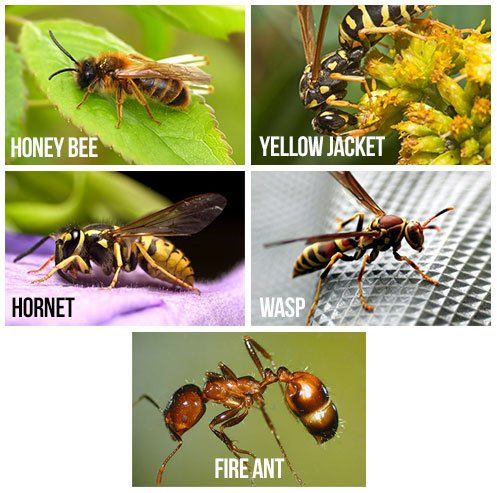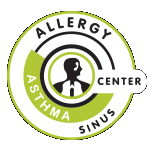STINGING INSECTS
Up to 13.5 million people in the U.S. may be at risk of an allergic reaction from insect stings (1). Allergic reactions can occur immediately, within minutes or even hours after the sting. Allergic reactions to stings put you at risk of a 65% chance of a similar or worse reaction if stung again (2).
STINGING INSECT AVOIDANCE TIPS:
- Never walk barefoot in the grass.
- Avoid insect attractants (fragrances, perfumes, hairsprays, lotions, etc.)
- Avoid wearing bright colored clothing.
- Use caution and learn to recognize insects shown below and their nesting and eating habits in order to avoid them.
YOU'VE BEEN STUNG! NOW WHAT?!
- Calmly brush the insect away and leave the area.
- If the stinger remains in the skin, remove it by flicking your fingers at it or by scraping it off with a flat surface like a credit card. Do NOT use tweezers!
- Apply cold compress to reduce swelling.
- If you have been prescribed an epinephrine autoinjector, use it immediately and seek immediate medical attention.
- Watch for any of the following symptoms that could indicate an allergic reaction requiring immediate medical attention:
- Itching, hives or swelling in areas other than the sting site
- Tightness in the chest or difficulty breathing
- Hoarse voice or swelling of the throat or tongue
- Dizziness or confusion
- Severe headache
- Stomach cramps, nausea, vomiting or diarrhea
- Shock, unconsciousness or cardiac arrest
(1)Golden DB, et al. JAMA 1989.; (2)Golden DB. Ann Allergy Immunol. 2006.
TOP FIVE STINGING INSECTS
SEE AN ALLERGIST!
If you have an allergic reaction to a stinging insect, chances are you will have a similar or worse reaction if stung again. See an allergist to determine what your allergy is and to discuss your options for venom immunotherapy as well as what to do should you be stung again.


